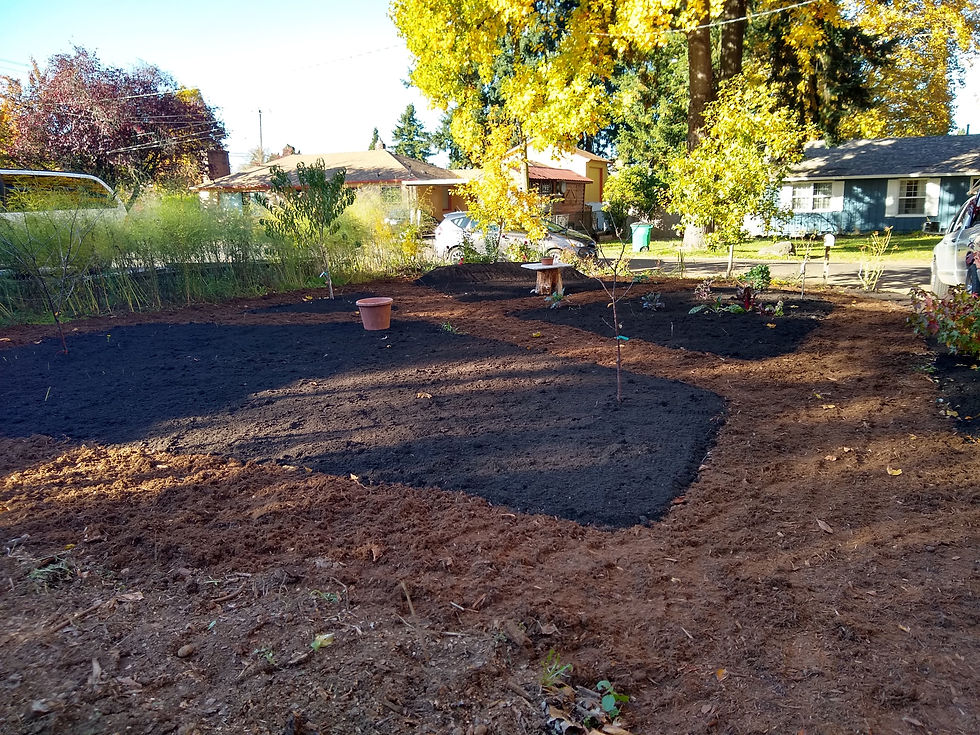Garden Math 101 Cheat Spreadsheet
- Chris Musser
- Oct 2
- 2 min read
How Much Compost, Mulch, or Chips?
It’s that time of year again: time to spread compost on the beds, top off the mulch, and refresh the wood chips on the paths.

In a tidy rectangle, the measuring and math are straightforward: length × width. But in real gardens, beds are triangular, paths curve, and sometimes you want a perfect ring of chips just outside a tree’s canopy. Here are some tips on measuring and a calculator to do the math.
Curving Paths
If your paths meander, there are a few easy ways to estimate:
Lay a hose down the center and measure the hose length. Multiply by the average width.
Break it into chunks and treat each bend as a short rectangle, then add them all up.
Eyeball an average width and multiply by the total path length.
Rings Around Trees
Let’s say you want a one-foot-wide ring of chips just outside the canopy of your cherry tree with a 10-foot-wide canopy.
Radius of the canopy = 5 ft
Radius including the ring = 6 ft
Area of the ring = π × (6² − 5²) ≈ 34.6 square feet
At 3 inches deep, that comes out to about 8½ cubic feet of chips, or roughly a third of a yard.
We Have the Technology...
If all this geometry makes your eyes cross, I’ve got you covered. I’m a bookkeeper and a plant nerd, so naturally I made a Coverage Calculator spreadsheet to do the math. Download a copy and open in Sheets, Excel, etc. Enter path lengths, bed widths, or tree canopy size, to calculate exactly how many cubic yards of compost, mulch, or chips to order. Here is an example of how I determined how many yards of cedar chips to order for paths in my yard.

Compost: Less is More
One thing I’ve learned after 25 years of growing vegetables and fruit in my front yard, and following the recommendations of soil scientists, is that you don’t need to add inches of compost to your garden every year.
½ inch per year is plenty, and even that can be reduced once your soil is healthy.
About six years ago, I switched to ½ inch every other year, and my garden still thrives.
Adding more isn’t just unnecessary—it’s expensive, and it can cause nutrient runoff that harms local streams and rivers.
Research backs this up:
So, save your money and protect your soil health, spread less, not more.




Comments